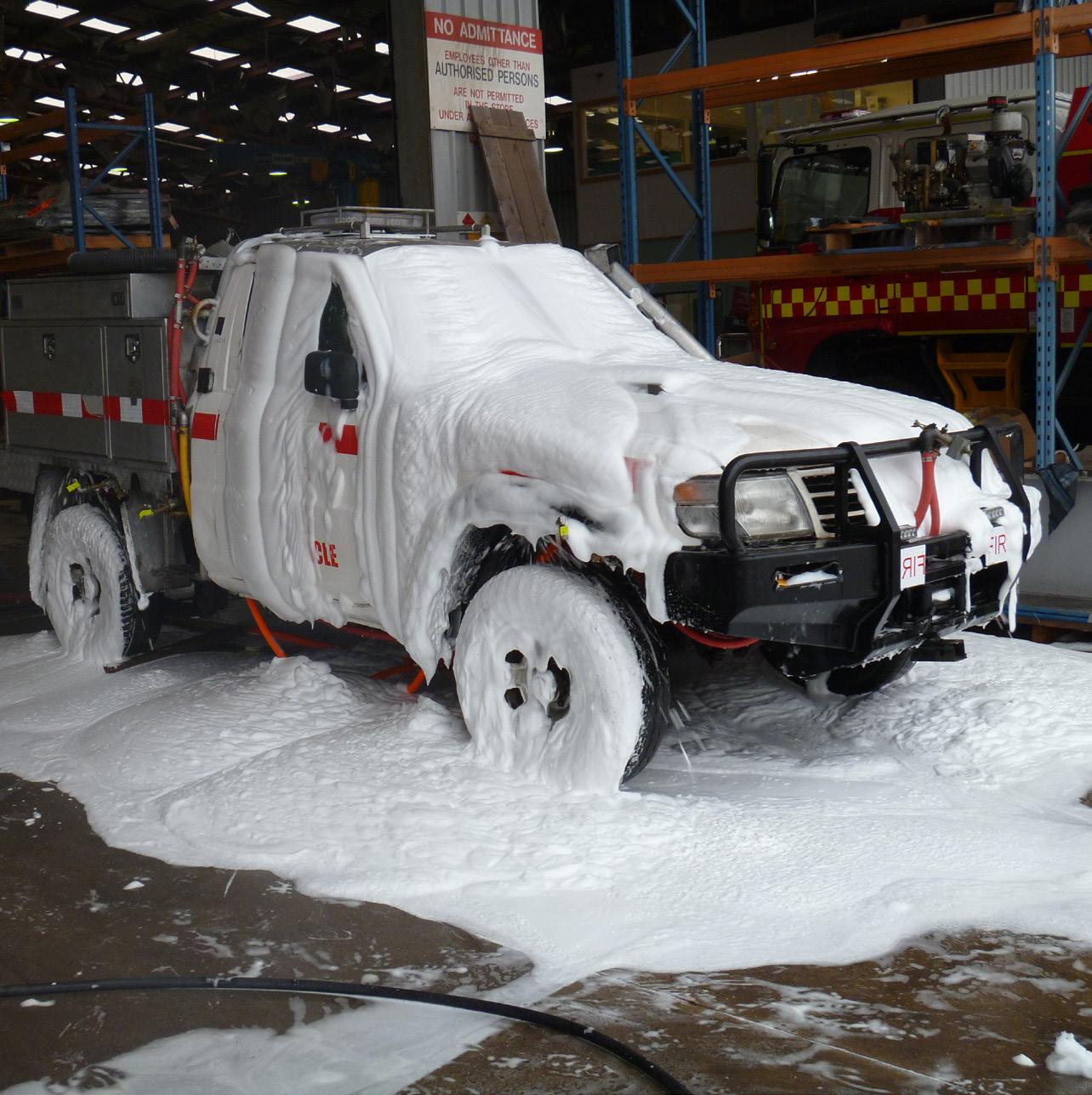International Journal of Wildland
International Journal of
Wildland Fire
International Journal of Wildland Fire (IJWF) #IntlJWildlandFire Volume 29 • Issue 9 • 2020
Review applications and introduce matches: December 2020 Mentoring Period: January – June 2021 Submit your application: iawfonline.org/mentoring-program
841–854
IJWF is published online and in print twelve times per year on behalf of the International Association of Wildland Fire by CSIRO Publishing. ISSN 1049-8001
Little Bear Fire (New Mexico). There is a close relationship between forest fires and human presence. Photo credit: Kari Greer.
CSIRO PUBLISHING
Timeline: Application period open: October – December 2020
Scientific Journal of the International Association of Wildland Fire
832–840
855–856
Published by CSIRO Publishing for the International Association of Wildland Fire
Volume 29 • Issue 9 • 2020
793–806
807–819
820–831
Pages 753–856
What makes a good mentor? • Commitment to the mentee’s learning and project goals. • Ability to provide positive feedback, encouragement, and advice when requested. • Interest in seeing and supporting the mentee’s growth and success in their professional or personal goals. • Ability to ask key questions to support the mentee to develop their problem-solving and creative thinking skills, and to be resilient and independent. • Ability to establish clear expectations and commitments, to express these to the mentee, and to ask for the same. • Generosity with tools and approaches that support others to learn • Willingness to share key contacts and networks with the mentee, and to source other areas of expertise when required.
753–763
764–778
779–792
International Journal of
Wildland Fire
Vol. 29(9) 2020
We are accepting applications for the winter cycle mentoring program through December 1. After the applications are received and reviewed, we will match the mentors and mentees based on interests and geographic location. Both parties will mutually agree to at least a six-month commitment. We will provide you with resources, i.e. checklists, agreements, suggestions, etc., if needed.
Fire
IAWF MENTORING PROGRAM
Forest fires in Mexico: an approach to estimate fire probabilities Luis Galván and Víctor Magaña Climate change projected to reduce prescribed burning opportunities United States in the south-eastern John A. Kupfer, Adam J. Terando, Peng Gao, Casey Teske and J. Kevin Hiers Evaluation of the Weather Research the south-west of Western Australia and Forecasting model in simulating fire weather for Jatin Kala, Alyce Sala Tenna, Daniel Rudloff, Julia Andrys, Ole Rieke and Thomas J. Lyons Quantifying how sources of uncertainty in combustible biomass propagate to prediction of wildland fire emissions Maureen C. Kennedy, Susan J. Prichard, Donald McKenzie and Nancy H. F. French Long-term changes in masticated woody fuelbeds in northern Oregon, USA California and southern Warren P. Reed, J. Morgan Varner, Eric E. Knapp and Jesse K. Kreye Effects of fuel characteristics on horizontal spread rate and of smouldering duff ground surface temperatures Daniel A. Cowan, Wesley G. Page, Bret W. Butler and David L. Blunck Using phytolith analysis to reconstruct prehistoric fire regimes in central coastal California Kea H. Rutherford, Rand R. Evett and Peter Hopkinson Fire history and its drivers based on peatland charcoal analysis in the Changbai Mountains, north-east China, during the last 13 000 years Meng Meng, Dongmei Jie, Dehui Li, Nannan Li, Baojian Liu, Honghao Niu, Ying Liu and Guizai Gao, Jiangyong Wang, Guihua Zhang Prescribed Burning in Australasia. The Science, Practice, and Politics The Bush of Burning Tom Zimmerman
For research on the physical, ecological, economic and social aspects of wildland
fire
www.publish.csiro.au/journal
s/ijwf
cover-29-9.indd 1
One of many IAWF member benefits include access to the online version of the Journal! IAWF members are also eligible for discounted Individual or Student print subscriptions.
11-09-2020 16:14:27
View the Most Read papers on our webpage, the Most Read ranking is based on the number of downloads in the last 60 days from papers published on the CSIRO Publishing website within the last 12 months. Usage statistics are updated daily. This months Open Access Papers are: Forest fires in Mexico: an approach to estimate fire probabilities by Luis Galván and Víctor Magaña Abstract: The probabilities of forest fires in Mexico are estimated using information on precipitation and temperature, along with data on type of vegetation, human activities near forests and fire prevention policies. The proposed model addresses the factors that account for extreme wildfire hazard, and may provide a basis for fire prevention actions, reducing vulnerability factors. Additional keywords: climate, drought, natural hazard, vulnerability. Climate change projected to reduce prescribed burning opportunities in the south-eastern United States by John A. Kupfer, Adam J. Terando, Peng Gao, Casey Teske and J. Kevin Hiers Abstract: Prescribed burning is a critical tool for managing wildfire risks and meeting ecological objectives, but its safe and effective application requires that specific meteorological criteria (a ‘burn window’) are met. Here, we evaluate the potential impacts of projected climatic change on prescribed burning in the south-eastern United States by applying a set of burn window criteria that capture temperature, relative humidity and wind speed to projections from an ensemble of Global Climate Models under two greenhouse gas emission scenarios. Regionally, the percentage of suitable days for burning changes little during winter but decreases substantially in summer owing to rising temperatures by the end of the 21st century compared with historical conditions. Management implications of such changes for six representative land management units include seasonal shifts in burning opportunities from summer to cool-season months, but with considerable regional variation. We contend that the practical constraints of rising temperatures on prescribed fire activities represent a significant future challenge and show that even meeting basic burn criteria (as defined today) will become increasingly difficult over time, which speaks to the need for adaptive management strategies to prepare for such changes. Additional keywords: coastal plain, piedmont, managed fire regimes, statistical downscaling, wildfire
wildfiremagazine.org
|
wildfire
11













